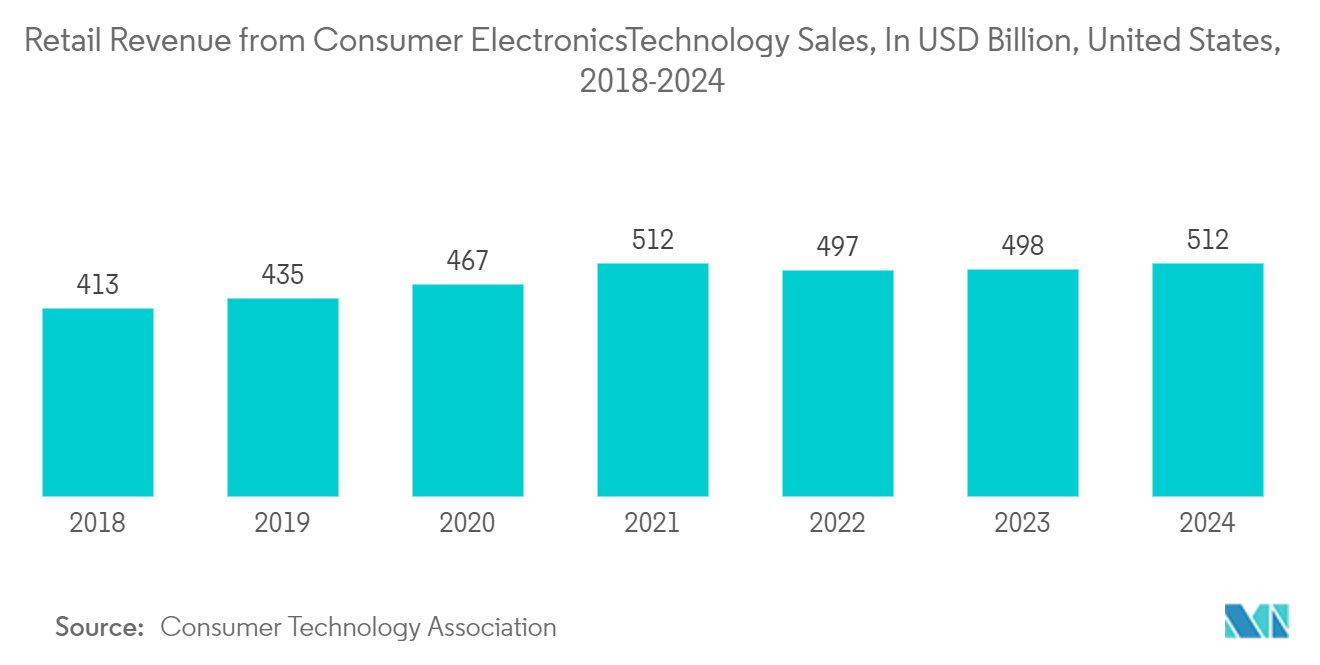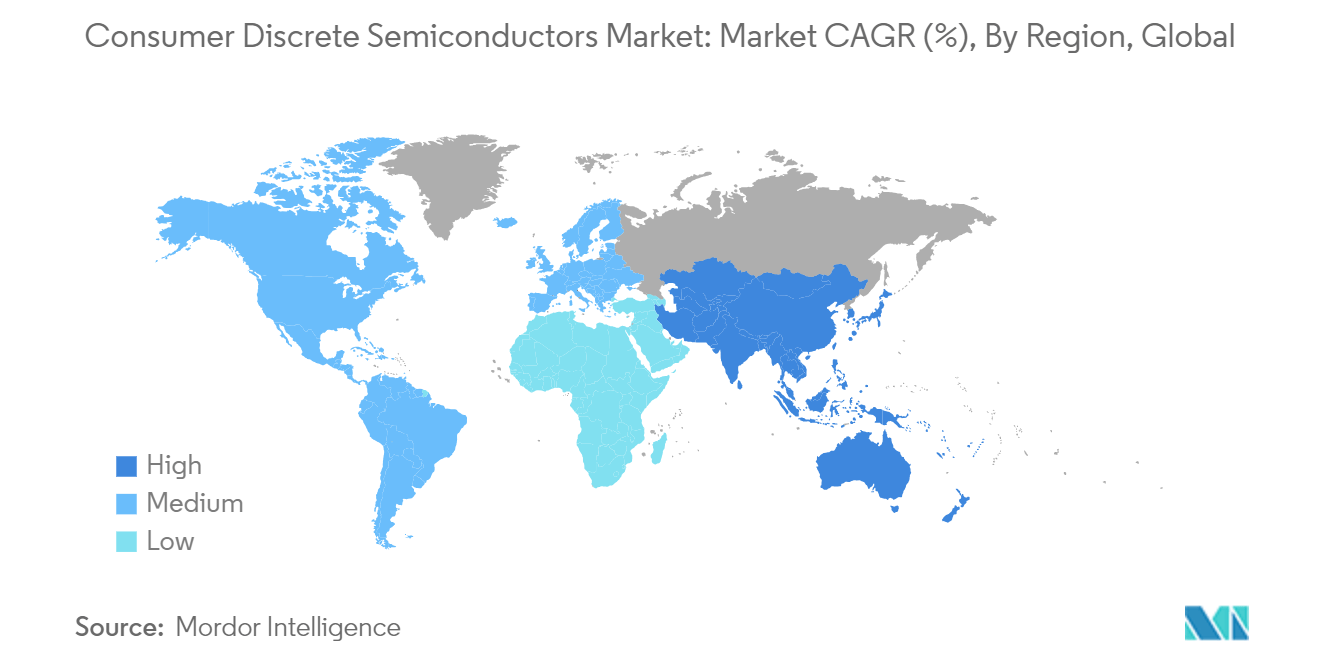Market Trends of Consumer Discrete Semiconductors Industry
Power Transistors are Expected to Hold a Significant Market Share
- MOSFETs, a subset of field-effect transistors (FETs), are essential in both amplifying and switching electronic signals across various applications. Their key feature is regulating current flow between source and drain terminals through an electric field. These devices are valued for their operational efficiency at low voltages, ensuring rapid switching and maximum performance.
- Conventional power amplifiers face challenges with power loss, highlighting the increasing demand for RF high-power MOSFET modules. These modules feature integrated impedance-matching circuits, enhancing their output power performance. Leading vendors, such as Mitsubishi Electric, are planning to expand their frequency range by introducing a 900 MHz module utilizing a new MOSFET. This strategic move is expected to deliver a 50W power output model, operating within the 763 MHz to 870 MHz band with a 40% efficiency, thereby reducing power consumption and extending radio communication ranges.
- The electronics industry is experiencing a surge in demand, driven by a variety of devices such as smartphones, tablets, laptops, wearables, and IoT gadgets. These devices depend on power transistors for their diverse functionalities. With an expanding consumer base and a continuous stream of new electronic devices, the demand for power transistors is on the rise.
- In the electronics sector, the consumer electronics segment is poised for significant growth. This growth is supported by a robust manufacturing ecosystem and the presence of industry leaders such as Sony, Samsung, and Panasonic. Their dominance drives the demand for discrete semiconductors and boosts the production of consumer electronic components.
- Additionally, several smartphone manufacturers are focusing on launching advanced devices to maintain a competitive edge. For instance, in April 2024, Redmi introduced a new version of its Redmi Note 13 Pro+ 5G. This special edition, known as the Redmi Note 13 Pro+ 5G World Champions Edition or the AFA Edition in India, is powered by a MediaTek Dimensity7200-Ultra SoC, paired with up to 12GB RAM and 512GB storage.
- The growth of the electronics industry, coupled with the proliferation of IoT devices that require efficient power transistors for seamless connectivity, serves as a significant growth driver. According to the Consumer Technology Association, the retail revenue from the US consumer electronics market is projected to reach USD 512 billion in 2024.

China is Expected to Hold a Significant Market Share
- The rising disposable income is significantly boosting the growth of the Chinese consumer electronics industry. As incomes rise, more consumers can afford to purchase a wider range of electronic devices, from smartphones to smart home gadgets. As per the National Bureau of Statistics of China, the average annual per capita disposable income of Chinese households was approximately CNY 39,200 ( USD 5409.96) in 2023. It saw a significant rise over the last decades and is rising at a high pace.
- Further, rapid urbanization has led to increased demand for modern conveniences and technologies, boosting the market for consumer electronics. As per the National Bureau of Statistics of China, in 2023, approximately 66.2% of the total population in China lived in cities.
- Furthermore, the Chinese smartphone industry is comprised of major players such as Huawei, Apple, Samsung, Xiaomi, and Lenovo. Most smartphone manufacturing facilities in China are in Guangdong Province, Beijing, Tianjin, and Shanghai. They are expected to sell more smartphones in China in the coming years, driving the market's growth.
- As per the National Bureau of Statistics of China, there were over 1.7 billion cell phone subscriptions in China as of December last year. According to Chinese official government statistics, the country had a penetration rate of 99.8% for mobile internet.
- The rising digital fitness in China, with opportunities for smart fitness wearables and smart sports wearables, will drive the market growth. The drivers for this market's growth are the rising fitness awareness and the growing demand for user-friendly devices with self-monitoring functionality.


